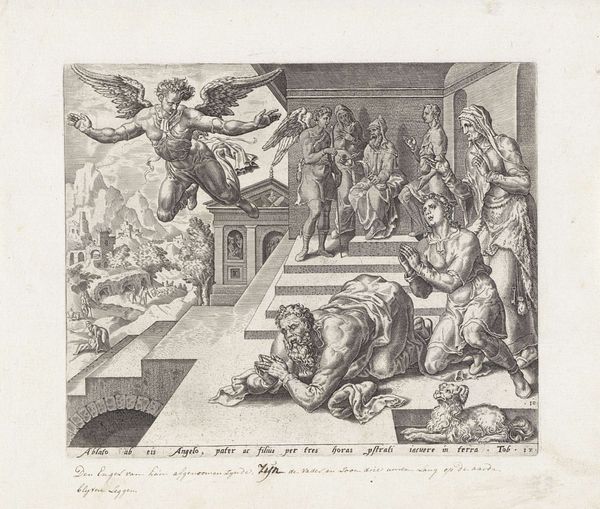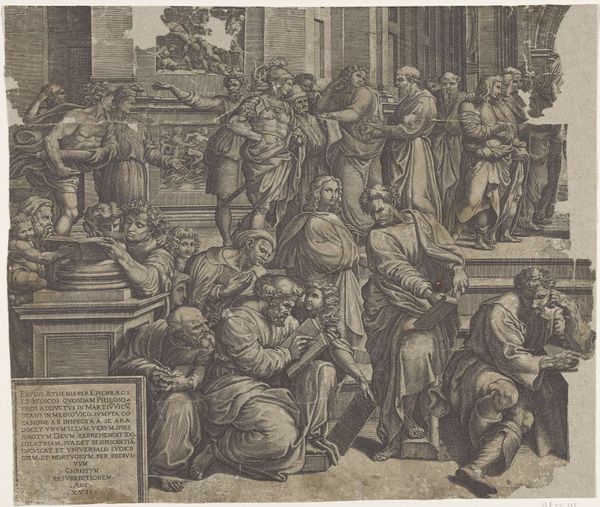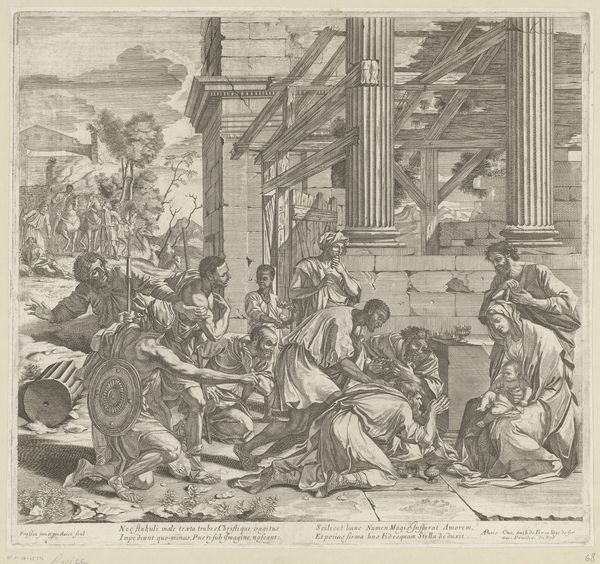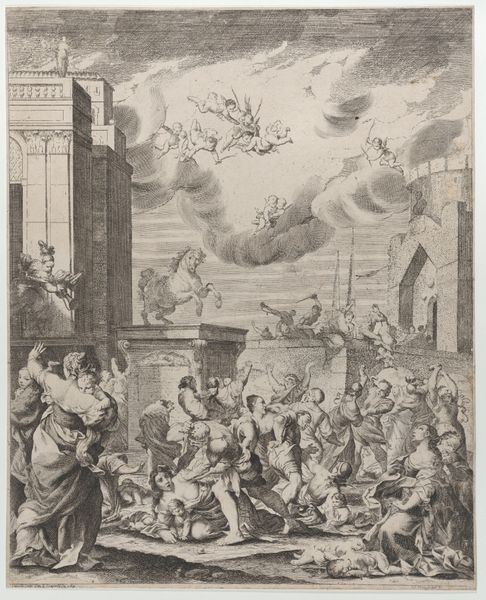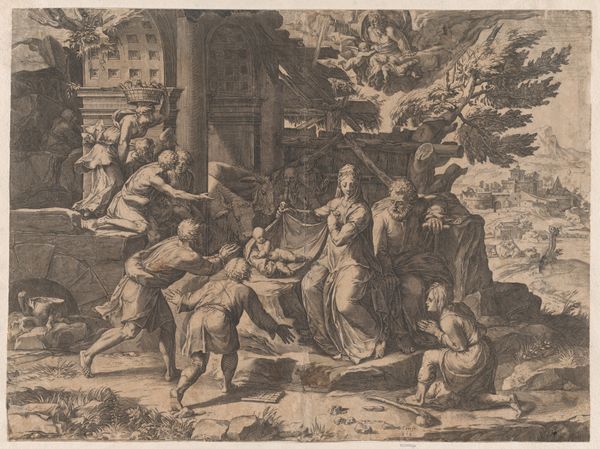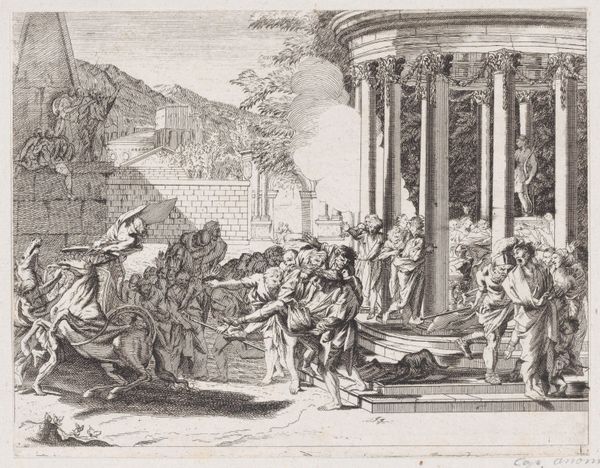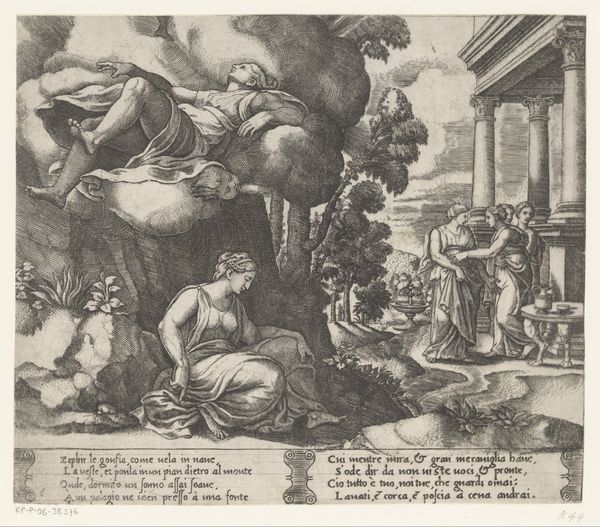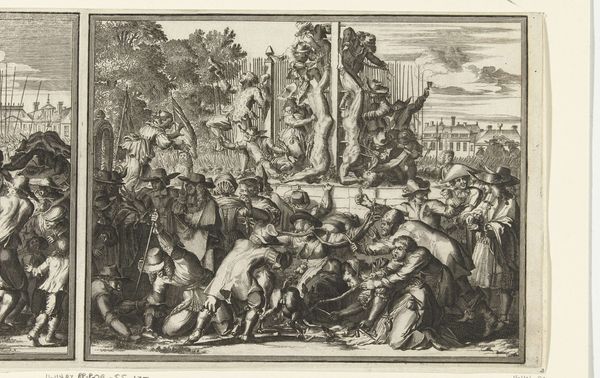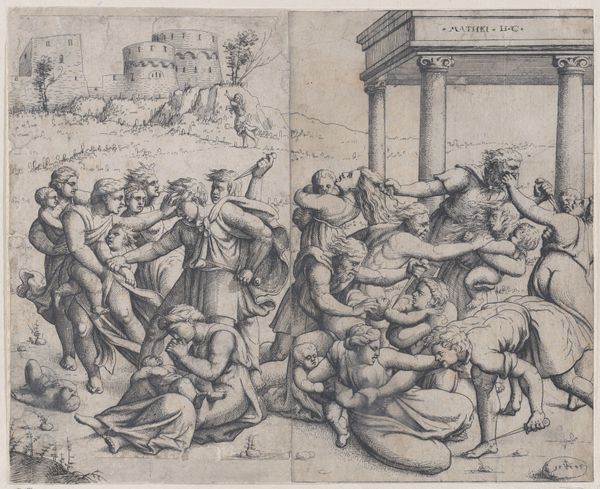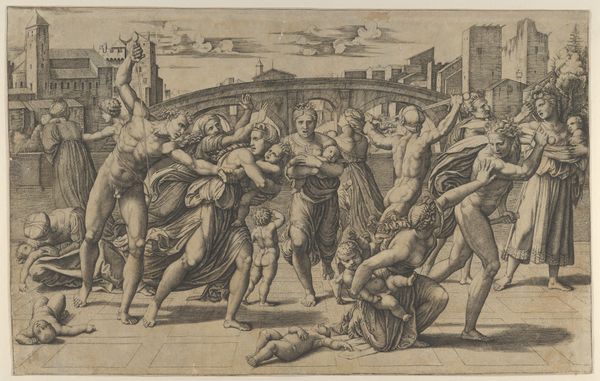
The Martydom of Saint Cecilia standing naked in a large cauldron, at left under a colonnade, sits a Roman Prefect, at right the statue of Jupiter in a niche 1515 - 1525
0:00
0:00
drawing, print, engraving
#
drawing
# print
#
figuration
#
history-painting
#
italian-renaissance
#
engraving
Dimensions: 9 3/16 x 15 3/4 in. (23.4 x 40.0 cm)
Copyright: Public Domain
Editor: This engraving, "The Martyrdom of Saint Cecilia" by Marcantonio Raimondi, created sometime between 1515 and 1525, really captures a dramatic moment. There’s Cecilia in the cauldron, an angel descending, and chaos all around. What cultural or symbolic readings do you find resonate most strongly in this piece? Curator: Look at how Saint Cecilia is centered, calm amid the tumult, crowned by an angel. What does that juxtaposition tell you about the artist's intention, the cultural memory he invokes? Her serenity points towards spiritual triumph. Then note the statue of Jupiter looking down upon this spectacle of religious intolerance. What historical tension does that opposition create, do you think? Editor: It's a contrast between pagan Rome and the rise of Christianity, certainly. And that the artist included that reference at all feels…intentional. But is that what someone viewing this piece would have understood at the time? Curator: Undoubtedly, but even then such symbols are not always perceived monolithically; they contain layered, subjective truths based on the knowledge, experiences, and desires of the observer. What impact do you believe that contrast of belief systems might have had on viewers during the Renaissance? How does it affect our perception of power and faith today? Editor: I guess it highlights the struggle between differing belief systems and how faith can triumph even in the face of extreme adversity. Curator: Exactly. Notice how this scene echoes earlier depictions of martyrdom, while also subtly reinterpreting them within the context of Renaissance ideals? Every element speaks to a visual language developed and adapted through centuries. What have you learned from the Martyrdom of Saint Cecilia, then? Editor: The symbols are so deeply rooted, and now I recognize them and understand the historical and cultural weight behind them.
Comments
No comments
Be the first to comment and join the conversation on the ultimate creative platform.
